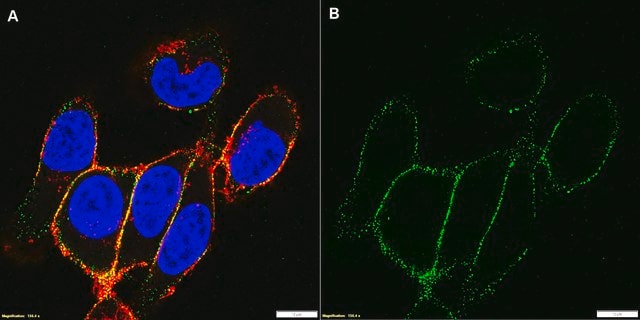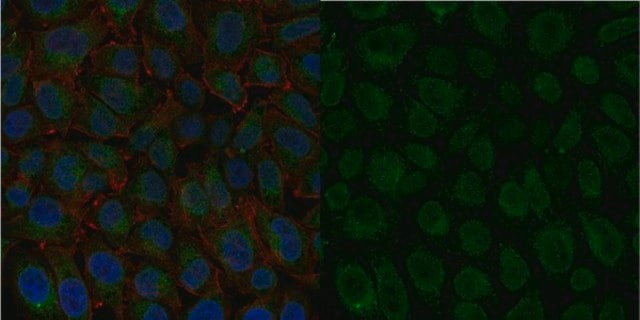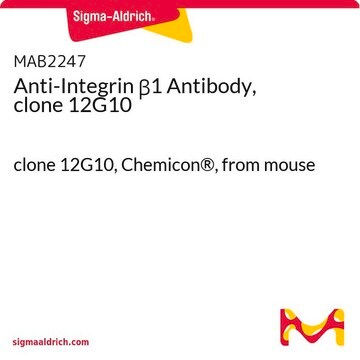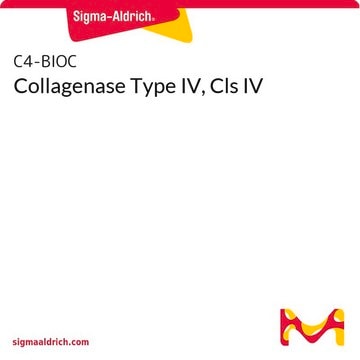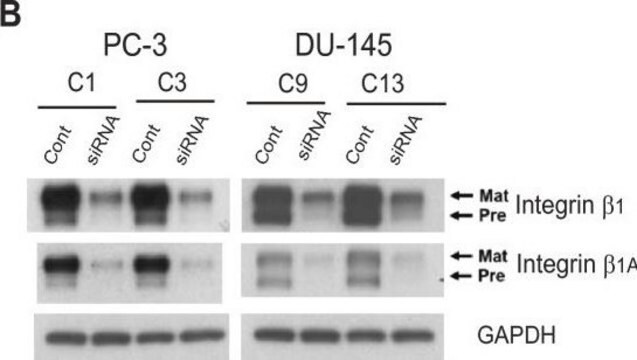MAB1987Z
Anti-Integrin beta 1 (CD29) Antibody
CHEMICON®, mouse monoclonal, P4C10
Sinónimos:
CD29, MAB1987
Seleccione un Tamaño
641,00 €
Seleccione un Tamaño
About This Item
641,00 €
Productos recomendados
Nombre del producto
Anti-Integrin β1 Antibody, clone P4C10, azide free, clone P4C10, Chemicon®, from mouse
origen biológico
mouse
Nivel de calidad
forma del anticuerpo
purified immunoglobulin
tipo de anticuerpo
primary antibodies
clon
P4C10, monoclonal
reactividad de especies
human
fabricante / nombre comercial
Chemicon®
técnicas
ELISA: suitable
immunocytochemistry: suitable
immunoprecipitation (IP): suitable
western blot: suitable
isotipo
IgG2a
Nº de acceso NCBI
Nº de acceso UniProt
Condiciones de envío
wet ice
modificación del objetivo postraduccional
unmodified
Información sobre el gen
human ... ITGB1(3688)
Descripción general
Especificidad
Aplicación
Immunoflourescence
Immunoblotting
Immunoprecipitation
ELISA
Immunocytochemistry Analysis: A 1:100 dilution from a representative lot detected Integrin β1 in HeLa cells.
Optimal working dilutions must be determined by end user.
Cell Structure
Integrins
Descripción de destino
Ligadura / enlace
Forma física
Almacenamiento y estabilidad
Nota de análisis
Human Tonsil, human skin, human lung, liver, and skeletal muscle tissues
Otras notas
Información legal
Cláusula de descargo de responsabilidad
¿No encuentra el producto adecuado?
Pruebe nuestro Herramienta de selección de productos.
Opcional
Código de clase de almacenamiento
12 - Non Combustible Liquids
Clase de riesgo para el agua (WGK)
WGK 2
Punto de inflamabilidad (°F)
Not applicable
Punto de inflamabilidad (°C)
Not applicable
Certificados de análisis (COA)
Busque Certificados de análisis (COA) introduciendo el número de lote del producto. Los números de lote se encuentran en la etiqueta del producto después de las palabras «Lot» o «Batch»
¿Ya tiene este producto?
Encuentre la documentación para los productos que ha comprado recientemente en la Biblioteca de documentos.
Filtros activos
Nuestro equipo de científicos tiene experiencia en todas las áreas de investigación: Ciencias de la vida, Ciencia de los materiales, Síntesis química, Cromatografía, Analítica y muchas otras.
Póngase en contacto con el Servicio técnico